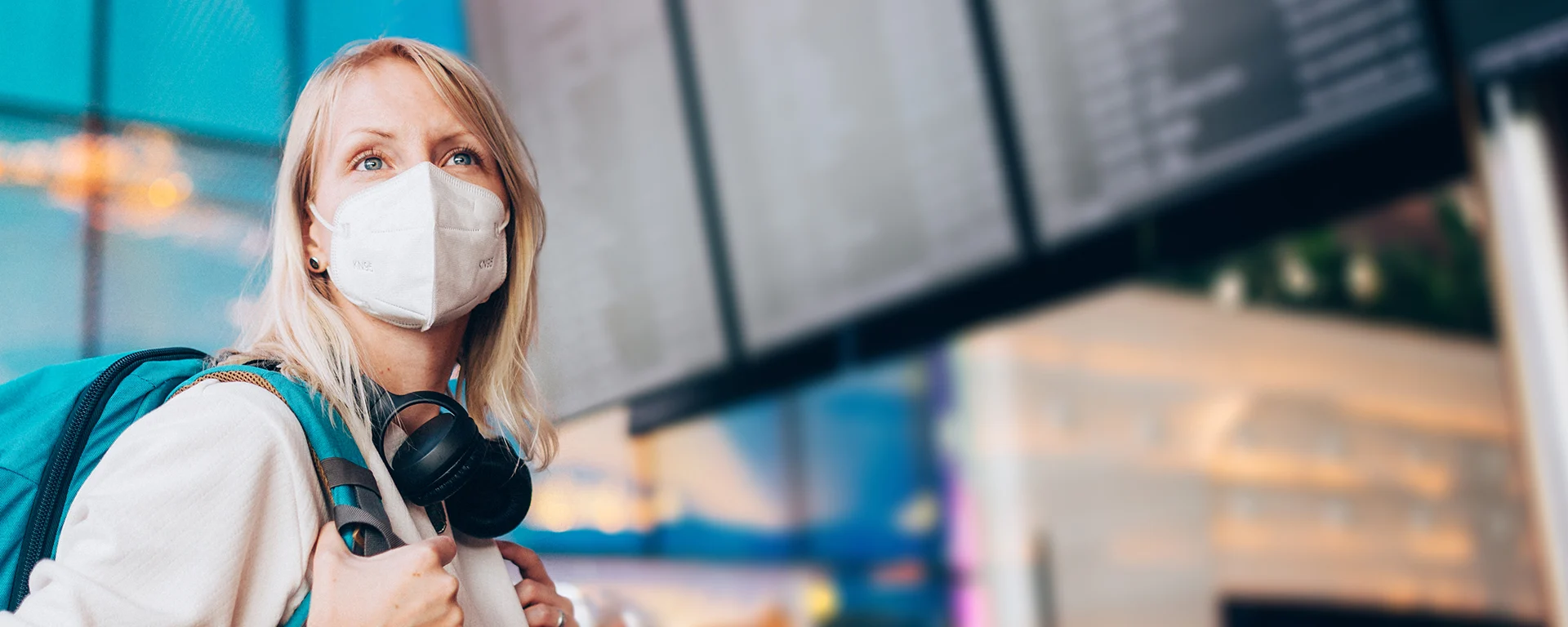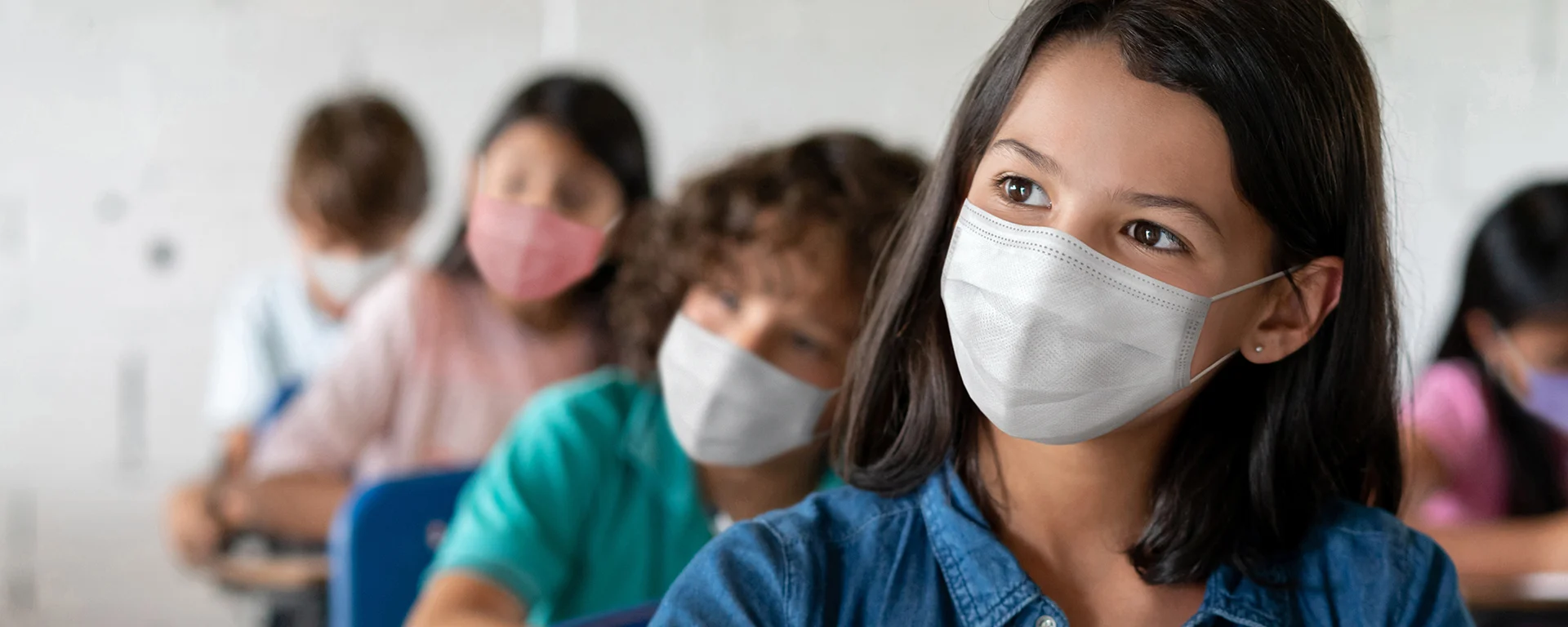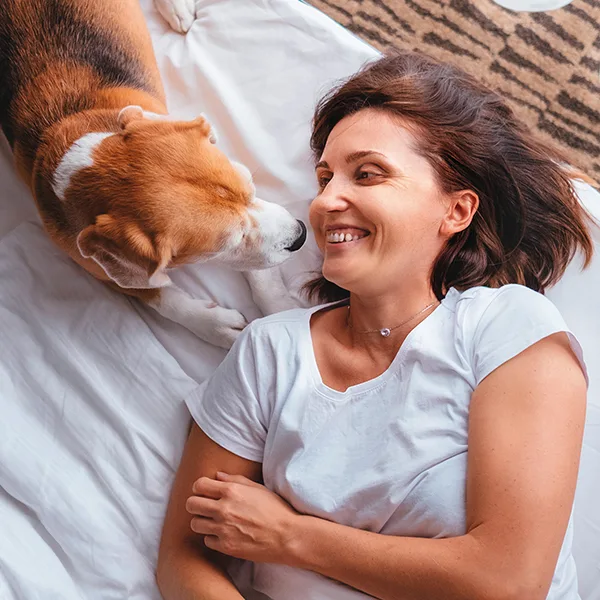COVID Safety: Back to Basics
Five simple, familiar tools can help keep you, your family, and your community protected.
Remember this time last year, when nearly everyone you saw in the grocery was wearing a mask? And you were still doing careful calculations about whom you spent time with? The warmer months brought a return to an almost-pre-COVID lifestyle. Summer fun and family traditions were back. School and work felt more normal.
As little as we want to do it, it’s time to put COVID safety back on our New Year’s resolution lists. Here’s why, and how you can minimize its impact on you and others.
First, the season.
Winter means we’re spending more time inside, sometimes with many other people. When we heat the air indoors, we dry it out — and airborne viruses like COVID and flu like dry air. The membranes in our noses are our body’s first defense against viruses in the air, and when they get dry, they don’t defend us very well.
Second, the latest variant.
Called XBB.1.5, it’s another version of Omicron, and it’s taking over really fast. It’s expected to be the dominant strain of COVID across the US in a few weeks from this writing. There’s currently no evidence that XBB.1.5 causes worse disease than any previous variant, but it’s still a big problem, for two reasons:
It’s good at getting around the immunity we already have, whether from infection or vaccines.
It’s super easy to catch, because it sticks to our cells really well.
Both wastewater and hospitalization levels are rising fast in the areas where this variant is already dominant. Some experts expect a national surge that will surpass this past summer’s peak.
Third, vaccines’ protection against infection wanes over time.
The vaccines prevent infection best during the first four months after you get them. The longer it has been since you got vaccinated or boosted, the more likely you are to get COVID. But — and this is important — they’re still really good at keeping you out of the hospital.
Fourth, and this one is on us: our relaxed precautions.
You probably don’t see so many masks in the grocery right now, and in most places, your kids aren’t asked to wear them at school. Like me, you might still have some masks crumpled up in your winter coat pocket from last year. And weren’t the holiday parties nice?
All that said, this is not our first rodeo. You don’t have to return to your April 2020 bubble to stay safe, but a few smart precautions can make a big difference.
Ask yourself: How clean is the air?
People infected with COVID exhale virus that can infect you when you breathe in. They can even do this when they don’t have symptoms. You might be surprised (and a little grossed out) by how far the coronavirus can spread in a room with poor ventilation, and how long it can stay in the air. So think about: How many people will I be sharing air with, and how many might be sick? How well is that air cleaned?
Vaccines are your strongest protection against serious illness.
Even if you got a booster a while ago, being up to date will help keep you out of the hospital, especially if you’re over 65. If you’re not up to date, it’s not too late. Get boosted, and stay up to date when new vaccines become available. (Find a vaccine near you.)
Masks help keep you from getting COVID — and giving it to others.
Any mask is better than no mask, but some masks are better than others. And consider treating yourself to a new supply for the winter, so you can retire those crumpled-up ones in your coat pocket! (Get new, effective masks.)
Rapid tests tell you if you're infected, so you don't spread the virus.
If you’re feeling sick, or you have been exposed to someone who is infected, you need to test. Be sure to use the test correctly. It also helps to test twice, about two days apart.
You probably still have some tests from last winter. Depending on the brand and exactly when you got them, they might be expired (you can check that here). There are many ways to get new tests for low or no cost, including ordering free tests from covid.gov.
Remember: Every time you take a rapid test, report your result — whether negative or positive — at makemytestcount.org. More reports help our public health response.
COVID treatments can help keep you out of the hospital.
To be effective, however, these medications have to be used early in your infection — typically within five days from when your symptoms begin. The good news is they’re free for everyone. Find out how to get treatment here.
These five tools — making sure you’re breathing clean air, vaccines, masks, rapid tests, and treatments — are your COVID safety toolkit. With another wave on the rise, it’s time to get reacquainted with them. And don’t forget, our COVID Risk Quiz will help you figure out how likely it is that you might have COVID-19 right now — or if you’re likely to get it based on where you live and your planned activities.
You’ve got this, now go forth and embrace 2023 — wisely!






